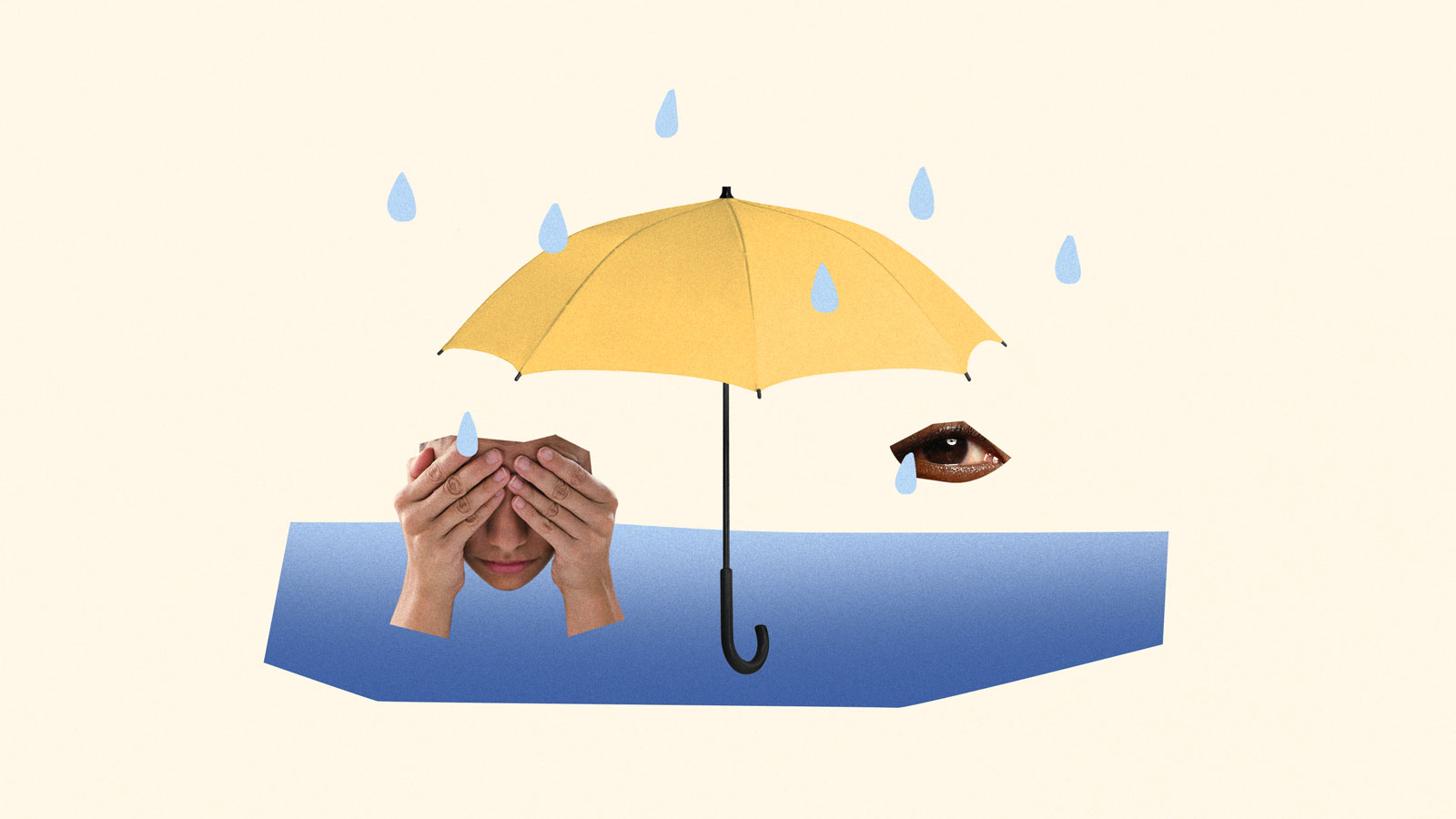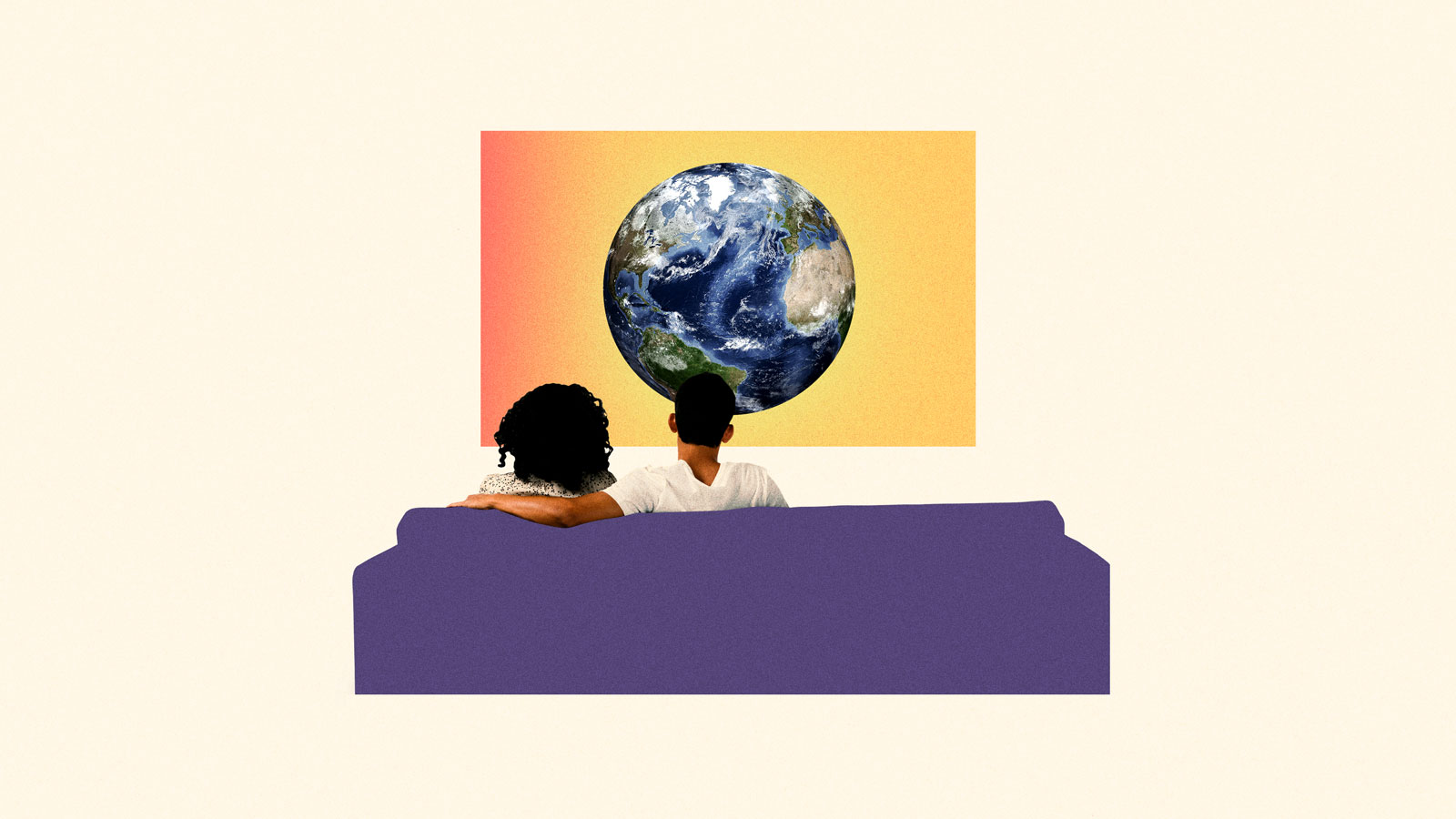This story is part of Fix’s What’s Next Issue, which looks ahead to the ideas and innovations that will shape the climate conversation in 2022, and asks what it means to have hope now. Check out the full issue here.
In psychologist Leslie Davenport’s vision of the future, every environmental organization will employ a psychologist to help employees shoulder the emotional weight of their work. “There would be this chill room where people could go when they just want to debrief, talk to somebody, or meditate,” says Davenport, who works in both Tacoma, Washington, and the San Francisco Bay Area. “To have [therapy] built into the work culture would be amazing.”
As for the rest of us, she wants her colleagues to recognize that climate change is wearing on the collective psyche — and to know that they have a crucial role to play as we all adapt to a changing world.
Davenport, who’s been a clinician for three decades, has dedicated the last 15 years of her career to something she calls climate-informed therapy. She’s helped clients of all ages cope with eco-anxiety and grief and, more recently, has been teaching other therapists how to do the same. She is also the author of books like Emotional Resiliency in the Era of Climate Change and All the Feelings Under the Sun: How to Deal with Climate Change, which is geared toward children.
Her eco-awakening came about in 2006 while reading up on climate change in her free time. “It really hit home just how serious it is,” she says. “It was one of those moments where my eyes felt peeled open. They could never look away again.” Back then, she had trouble convincing her colleagues that the issue was worth their time. To her, the connections were obvious.
“People were starting to say that climate change is caused by human behavior. I was like, ‘Oh, I study human behavior,’” she says. “We get trained on how to break through denial, how to motivate behavior changes, how to communicate sensitive topics to promote engagement rather than polarize.”
Interest in climate-related therapy has exploded in recent years. In 2017, the American Psychological Association released a report detailing climate change’s detrimental effects on mental health. Natural disasters are linked to post-traumatic stress disorder; residents of polluted communities often suffer from depression; and simply reading news about the impacts of these changes can trigger anxiety. More and more organizations like One Resilient Earth have cropped up to call attention to the intersections of environmental and emotional well-being. Environmental advocacy groups also have started seeking Davenport’s services. “They’re saying, ‘Our staff needs support. We’ve never considered that before. We’ve just been out there doing the work. But now this emotional dimension is really coming to light,’” she says.
In the future, Davenport even hopes to see therapists involved in crafting initiatives to curb emissions. “Why are there no therapists at the table in these interdisciplinary efforts?” she says. “That’s a big interest of mine: What is it about our human psychology that has been contributing to the problems, and what could contribute to the solutions?”
Fix talked to Davenport about the future of climate-informed therapy, the role psychologists can play in the solutions to global warming, and how people can cope as we enter a different world. Her comments have been edited for length and clarity.
Q. I feel like more people are talking about climate-informed therapy. I’d love your take on when that shift started, how quickly awareness has been growing, and what you think is driving it.
A. In the last five years, it’s been almost a vertical line from people being perplexed at what I’m talking about to, “Can I talk to you, because I’m waking up to this and I’m feeling a lot of distress?” More people are being touched directly by climate events, whether it’s actually having to outrun a flood or fire, or just being in a smoky area. It’s also helpful that the media coverage has gone up. Climate scientist Katharine Hayhoe always says that keeping [climate change] an active conversation is an important piece of dealing with it. The media is assisting with that, now that it’s a constant theme.
Q. What patterns are you seeing among the people who come to you for climate therapy?
A. Terms like “eco-anxiety” and “eco-grief” are being used more commonly, and I think that’s good. I like an umbrella term like “environmentally triggered distress,” or “eco-dread,” because it can show up in so many ways. For some kids, it shows up in their bodies. They have stomachaches, headaches. They’re acting out, they don’t want to go school.
But anxiety or fear is a big one. For people who are working actively [on climate action], they have that, but they sometimes tip more toward burnout or depression. Like, “I’m doing everything I can. I’m not seeing the fruits of my efforts. It’s got to happen on a bigger scale. It’s got to happen faster. I need to check out for a while. I can’t stay in this anymore.” It is often coming from a feeling of [being] overwhelmed.
There’s a valid outrage. In fact, we need to acknowledge that all the feelings are valid, and not pathologize them. If you’re human and you’re paying attention and you care, you are going to feel a lot of feelings.
Q. You know, I have heard about therapists who pathologize those feelings, or act like they’re unreasonable.
A. And that gives me outrage. Right now there are no [climate-related] requirements in any licensures, in psychiatry, psychology, social work, counseling. No school or licensing board is requiring any training in this. Which is why these therapists, who are just people too, don’t recognize what [those feelings] are really about. It gets put back on the client. It’s a terrible thing. But I think it will change.
Q. What makes you think it will change? Have you seen any progress?
A. Organizations have cropped up. One is called Climate Psychology Alliance, and there’s also Climate Psychiatry Alliance. These are groups of professionals who are coming together to form a community, get training out there, and create guidelines and competencies.
I and another person have been asked to design and co-direct a 75-hour certification training. Right now the title is “Climate Psychology: Cultivating a Climate-Aware Practice.” It’ll be offered through a California-based university, but it’ll act as continuing education for licensed therapists.
There are climate cafes, climate circles, and the Good Grief Network, where people get together and talk and support each other on a feelings level. All of that is pointing toward this need and this recognition of how important it is.
Q. As we see this field grow, do you think it’s something that every therapist will be trained in? Or do you think it’s more likely that it’ll become a niche?
A. I’m fighting for that — that every therapist [be trained on climate.] Every therapist now has to do a certain number of units in suicide assessment and elder abuse. That didn’t used to be true. Even the Diagnostic and Statistical Manual gets updated and redefined. So I do think eventually it will get there.
[Climate change] is so much more widespread than other things that are niche, like addiction treatment, which doesn’t apply to everyone. But I think climate change applies to everyone. There’s no place to run, no place to hide.
Q. A certain degree of warming is already locked in, as are the consequences. How can therapy help us deal with what’s next?
A. I’ve been redefining what emotional resiliency is. The conventional definition is how quickly you can bounce back from a stressful event. But the reason I think that’s a poor definition when it comes to climate change is that there isn’t a “getting back.” We’re in this shifting world, on this escalating trajectory. We should think of emotional resiliency as cultivating the capacity to increase our ability to remain present, grounded, open-minded, and empathetic in the face of increasing stress.
We need internal strategies and external strategies. The internal ones can be anything from breathwork to mindfulness practices to kickboxing. It can be social: connecting with other people as a form of support to ourselves. Whatever you need to do to reset yourself, to become aware of the stories you’re running in your mind, and be conscious about when you want to set those down and when you want to focus again.
The external is to make a contribution to shifting to a healthier world. And it may or may not look like traditional activism. It could be, if you’re a school teacher, doing an after-school green lab, or a field trip to the oceanic museum. If you’re an artist, is there a way [climate change] could be included in your artistic expression?
Q. You argue that therapy can be a climate solution. What expertise can therapists bring to the global effort to curb emissions?
A. One is in partnering with nonprofits who have media campaigns. As people, we don’t relate very well to data. The parts per million of carbon in the atmosphere or the melting ice where the polar bears live — those are important things, but [messaging] tends to be more effective if it feels personal. Do you want clean air for your kids? What about this lake that you used to always go to that now has toxic algae and you can’t anymore? If we’re trying to get as many people on board as possible, it’s helpful to hit home.
Psychology is good at recognizing the lenses we put in front of our eyes that are shaped by our childhoods, life experiences, cultures. If you grew up in a household that had a lot of instability, you might formulate a sense that the world is not a safe place. We tend to have experiences that confirm our biases. It can feel like it’s the truth.
The lens that has contributed to climate change is that we view the world as if everything functions separately, versus the interdependent nature of things. A tree is viewed just as a commodity but not understood in terms of soil stability and how it cleans the air and regulates temperature. We see it as a thing, not a living system that we’re part of. If we had a way of recognizing that falsehood and understanding our world and our place in it, I think it would guide our actions and behaviors.
Explore more from Fix’s What’s Next Issue:
- Opinion: They said ‘Black Lives Matter.’ But climate orgs haven’t lived up to the promise.
- Hope is not passive: How activism keeps optimism alive
- The future of farming? Think artificial intelligence, robots, and drones.




